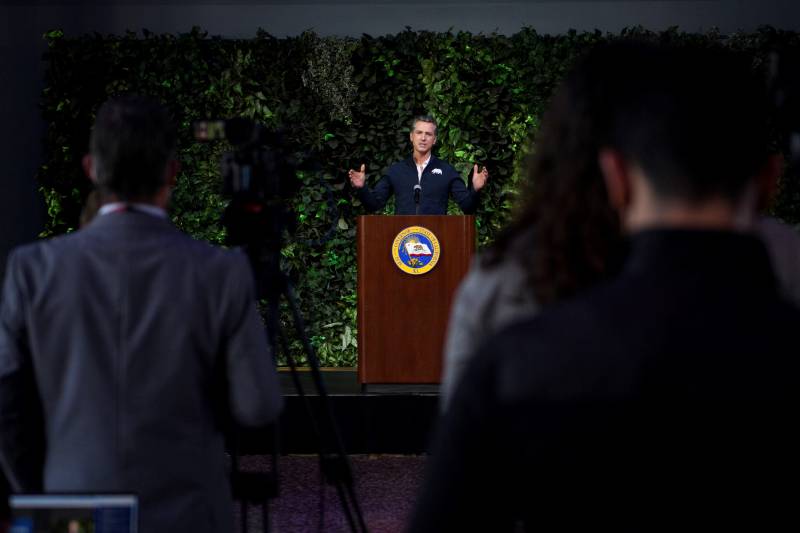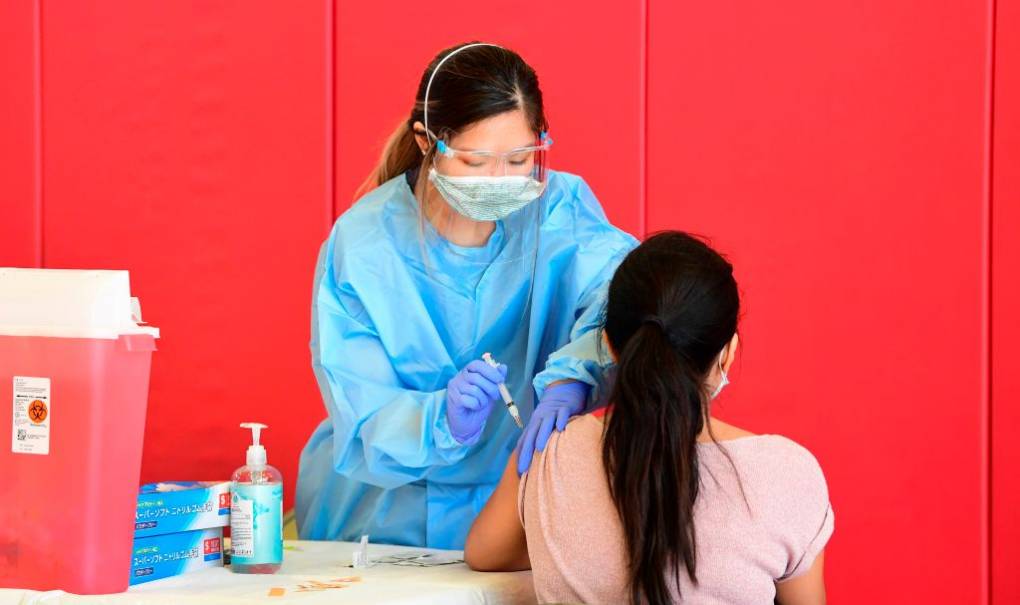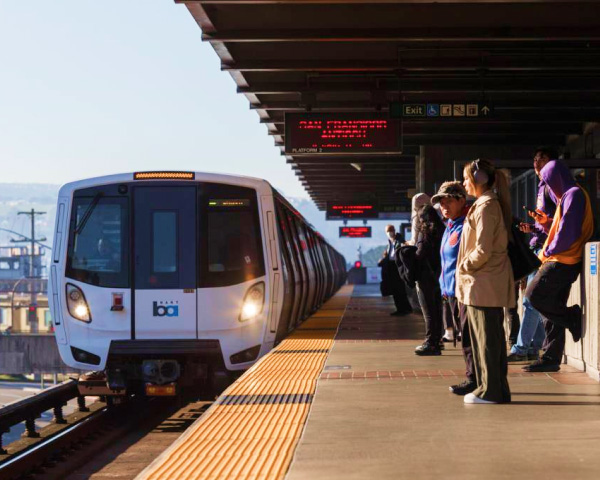On a visit to Long Beach this morning, Gov. Gavin Newsom declared in a briefing that the only thing holding back the state’s vaccination plan is the limited capacity of vaccine manufacturers.
“There’s not enough doses. There’s not enough vaccines to accommodate the need and demand,” Newsom said, speaking from the massive vaccination site at the Long Beach Convention Center, where local health authorities have been vaccinating teachers for about a month.
“Manufacturing supply in the United States of America is limited,” Newsom stressed. “While it’s good that we are administering roughly 200,000 doses a day, we’re receiving just shy of that if you average the amount of doses we receive on a weekly basis.”
The latest numbers from the state show that 7.4 Californians have been vaccinated, about 18% of the overall population.
This week, California expects to vaccinate 1.4 million more people, just as Blue Shield takes over the helm of the state’s vaccine distribution plan. According to $15 million the contract signed between the state and Blue Shield, the care provider will have to amp the weekly vaccination number up to 4 million by April.
San Francisco and other Bay Area counties are expected to fully join the Blue Shield network next month. This system will use My Turn as the designated place to sign up for a vaccination.
Blue Shield, along with the state government, will develop an algorithm to determine how vaccines are allocated and set incentive payments and performance aimed at getting providers to give doses out more quickly and to the right populations.
The state also will set goals for what percentage of vaccines go to people in low-income or otherwise disadvantaged areas.
Newsom used the press briefing to also hold up Long Beach as an example of success on how local health authorities can move forward with reopening schools. Long Beach Unified plans to resume in-person learning for elementary schools on March 29.
And while Long Beach authorities seem confident about this goal, their inoculation strategy is still restricted by a low vaccine supply. Newsom commented that the Conference Center site is only operating at about a third of its full capacity.
Local health authorities, however, point out that confusion about which counties can move to the Blue Shield system, and when, may also make it even harder for vaccines to reach the population.
Brynn Carrigan, director of public health for Kern County, said she was told that as of last Sunday everyone must make appointments through My Turn, the state’s vaccine sign-up system.
“Our hope is there’s not a lot of hiccups and this goes smoothly.” Darrel Ng, vaccine spokesman for the state’s public health agency, declined to answer questions about what to expect during the transition.


